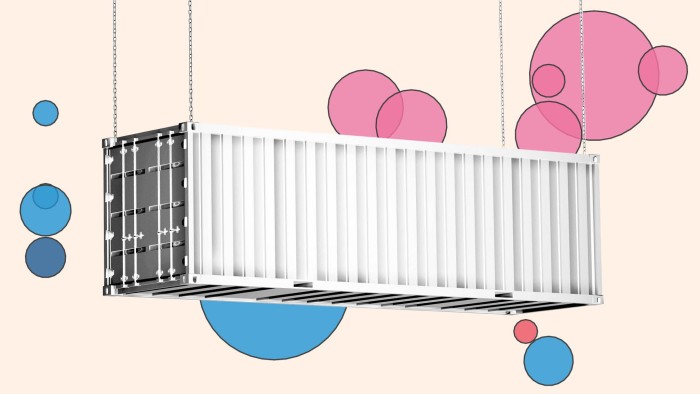Unlock the Editor’s Digest for free
Roula Khalaf, Editor of the FT, selects her favourite stories in this weekly newsletter.
The Donald Trump administration’s latest round of tariffs creates a fresh labyrinth of rules for traders and countries.
Here are some striking and unexpected outcomes from the US’s leap back towards protectionism.
Asian countries take a double hit
Many of the highest tariff rates announced by Trump on Wednesday apply to Asian countries, with Cambodia facing tariffs of 49 per cent, Vietnam 46 per cent, Thailand 37 per cent, Taiwan 32 per cent and Indonesia 32 per cent, all well above the blanket 20 per cent rate imposed on US imports from the EU, for example.
Compounding the misery for those nations, the vast majority of the region’s exports to the US will not be covered by the limited list of exempted goods announced by the White House on Wednesday.
Even if these exemptions — which include pharmaceuticals, semiconductors, lumber and certain minerals — prove to be temporary, it sends a clear message to Asian countries that their staple exports to the US are potential early casualties of a new trade war.
The EU’s flat rate
The 20 per cent flat rate applied to all the EU has created a curious pattern of winners and losers, depending on each member state’s individual trade with the US.
In 2024, the US reported that its biggest trade surplus in goods was with the Netherlands ($55bn), which receives the same tariff rate as Ireland — with which the US ran a goods deficit of $87bn over the same period.
Nations like France, Spain and Belgium, with which the US runs surpluses or small deficits, may grumble at the blanket rate, but 15 countries in the bloc would have received a higher tariff if the rules had been applied at individual member level.
Even this only tells half the story, as temporary exemptions on various products create a wide range of effective rates for EU nations.
Ireland’s focus on pharmaceuticals, which have been temporarily exempted from tariffs, will keep its effective tariff rate below 5 per cent for now.
For Slovakia, though, additional tariffs such as those Trump has introduced on autos and car parts mean its manufacturing-heavy economy faces an effective rate well above the 20 per cent headline.
Friendly fire — US trade surpluses attract tariffs too
Although Trump’s tariffs aim to target countries with which the US has large trade deficits, the global minimum 10 per cent tariff predominantly hits countries with which it has trade surpluses.
According to its own trade figures, the US has a trade deficit with only 14 of the 122 countries being handed the 10 per cent tariff.
The UAE, with which the US has a $19.5bn surplus, Australia, with $17.9bn, and the UK, with $11.9bn, are the most heavily hit by the “friendly fire” among this cohort, in relation to their trade balances.
Annual trade patterns may not repeat every year
The so-called “reciprocal” element of the tariffs was calculated using trade data from 2024. But import and export trends constantly shift, leaving a slew of countries facing tariff punishment after one good year — and vice versa.
In 2024, the US reported a deficit with 15 countries with which it had a surplus the year before. Conversely, the US reported a trade surplus with 18 nations that ran a deficit the previous year, leaving Kenya, for example, with just the baseline 10 per cent.
For some countries, 2024 deviated heavily from longer-term trends. Namibia received a tariff rate of 21 per cent after recording its highest surplus in more than a decade in 2024, despite a deficit in three of the previous four years.
And spare a thought for the 5,819 inhabitants of St Pierre and Miquelon, who were briefly set to be hit with a 50 per cent tariff, according to initial figures released by the White House. That rate was based on a highly unusual 2024 for the semi-autonomous French overseas territory, which earned a trade surplus by returning a single $3.4mn aircraft part to the US.
That high tariff rate had disappeared, however, by the time the White House issued its official executive order.







